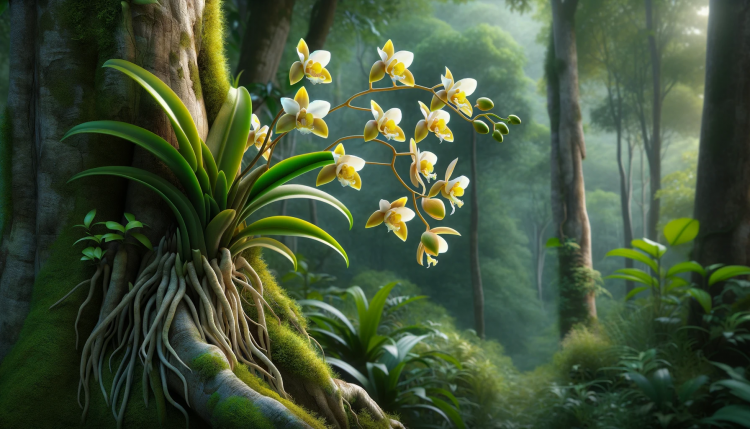
Quick Identification Guide for Orchids (Family Orchidaceae):
Appearance:
- Orchids exhibit a wide range of colors, shapes, and sizes, but they are generally characterized by a bilateral symmetry of their flowers, with each flower having three petals and three sepals.
- The middle petal, often called the lip or labellum, is usually distinctively shaped and may be highly colored or patterned, serving to attract pollinators.
- Orchids typically have a column in the center, which is a fusion of the male and female reproductive parts.
Common Types:
- Phalaenopsis (Moth Orchid): Perhaps the most common household orchid, with broad, flat petals and a wide, flat lip.
- Cattleya: Known for large, showy flowers, often used in corsages.
- Dendrobium: Features long stems with multiple flowers, often in bright colors.
- Paphiopedilum (Lady’s Slipper): Characterized by a pouch-like lip.
Plants Commonly Confused With:
- Bromeliads: Can have similar striking flowers but usually have a rosette of leaves at the base and a central flower spike.
- Iris: Some iris species have a flower structure that can resemble orchids, but irises are generally more rigid in form.
- Daylilies (Hemerocallis): Bright, showy flowers may resemble some orchid blooms but have a different growth habit and leaf structure.
Habitat:
- Orchids are found on every continent except Antarctica, with the greatest diversity in tropical regions.
- They grow in a variety of habitats, from rainforests to grasslands, and in some cases, even arid deserts.
- Many are epiphytic (growing on trees) or lithophytic (growing on rocks), but there are also many terrestrial species.
Cultivation:
- Widely cultivated for their beauty, orchids are popular in the horticulture industry and among plant enthusiasts.
- They require specific growing conditions, including appropriate light, temperature, and humidity, which vary among different orchid species.
Orchids are renowned for their exotic beauty and incredible diversity, with some species highly prized for their rarity and unique appearance. Their sophisticated flower structure sets them apart from other plant families and makes them a subject of fascination and study in botany and horticulture.


Quick Facts About Orchids (Family Orchidaceae):
Family: One of the largest families of flowering plants, Orchidaceae.
Number of Species: Over 25,000 naturally occurring species, and more than 100,000 hybrids and cultivars.
Diversity and Appearance:
- Orchids come in a vast array of sizes, shapes, and colors.
- Characterized by their unique flower structure, with bilateral symmetry, three petals, and three sepals.
- The middle petal, often distinct, is called the lip or labellum, which is usually elaborately shaped.
Habitat:
- Found on every continent except Antarctica.
- Diverse habitats including tropical rainforests, temperate woodlands, grasslands, and in some arid regions.
- Many are epiphytic (growing on trees), some are terrestrial (ground-dwelling), and others are lithophytic (growing on rocks).
Reproduction:
- Orchids reproduce through seeds, but they require a symbiotic relationship with a fungus for germination.
- Many species also reproduce asexually through new shoots.
Pollination:
- Orchids have intricate pollination mechanisms, often involving specific pollinators like certain species of bees, birds, and even moths.
- Some orchids mimic the appearance and scent of female insects to attract male pollinators.
Cultivation:
- Popular in horticulture and among plant enthusiasts for their beautiful and diverse flowers.
- Require specific care, including the right balance of light, temperature, humidity, and watering.
Cultural Significance:
- Symbolic meanings in many cultures, often associated with love, luxury, beauty, and strength.
Conservation:
- Many species are threatened by habitat destruction and over-collection.
- Subject to international trade regulations under the CITES agreement.
Orchids are celebrated for their extraordinary beauty and ecological intricacies. Their vast diversity and intricate flowers make them a subject of admiration and fascination in both the natural world and human culture.





